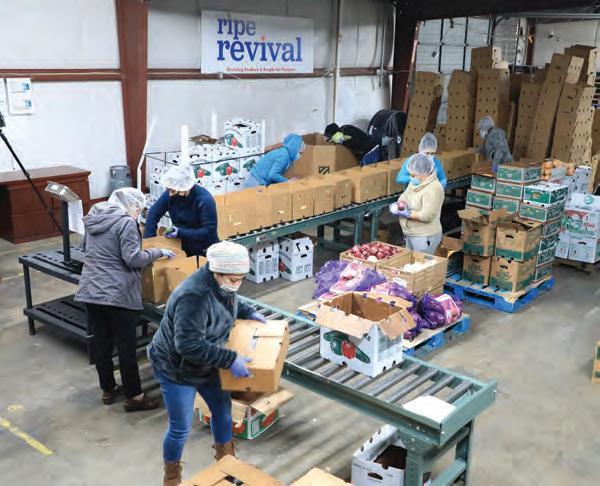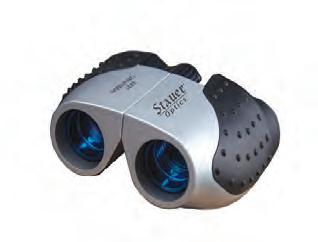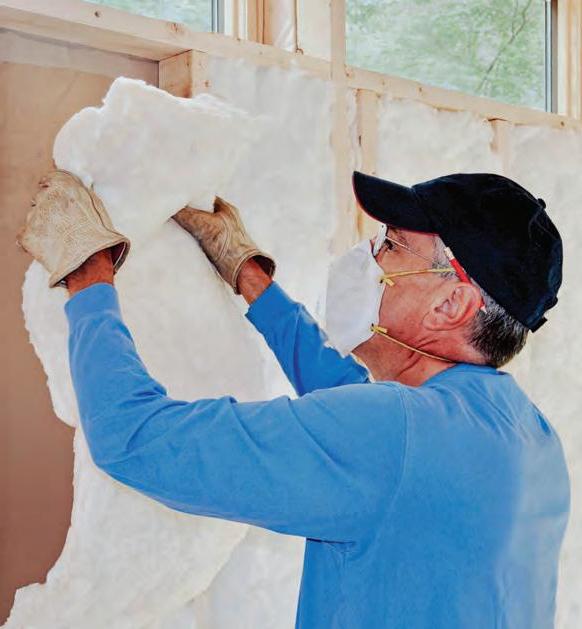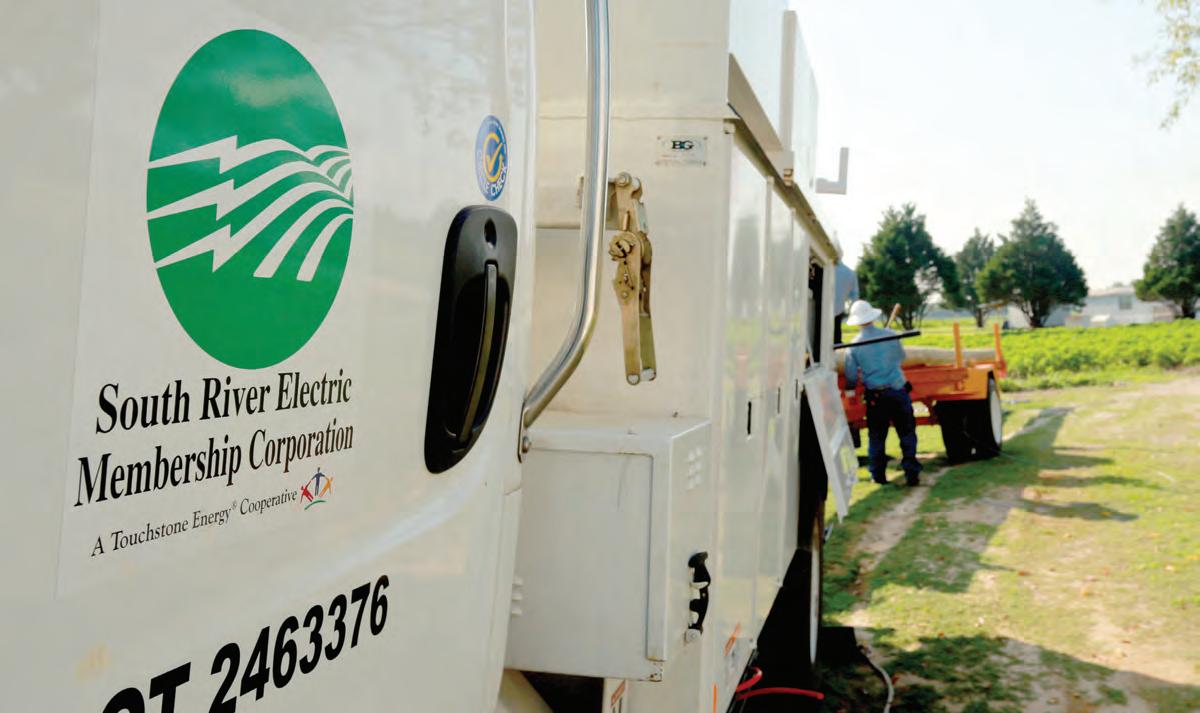
25 minute read
Fresh Produce, Delivered Will Kornegay is closing the gap between food excess and access
from 2021-09-SREMC
Will Kornegay Ripe Revival Market’s Rocky Mount warehouse

Fresh Produce, Delivered
Will Kornegay is closing the gap between food excess and access
By Bridgette A. Lacy | Photos courtesy of Ripe Revival Market
In early 2020, Will Kornegay and his sister, Laura Hearn, were gearing up to expand distribution of locally sourced gummies produced through the company they co-created, Ripe Revival. And then the Covid19 pandemic hit. Retailers were no longer accepting new vendors; but Will saw an opportunity to launch a new project.
That April, he pivoted to sell boxes of meat, dairy, fruits and vegetables — sourced from North Carolina farms in season — for delivery to consumers’ front doors.
He focused his new company, called Ripe Revival Market (riperevivalmarket.com), on three pandemic challenges: consumers who wanted to avoid grocery stores and needed groceries delivered to their homes; Eastern NC farmers and local food distributors who needed new markets for their goods as restaurants, schools and other institutional buyers scaled back their operations; and the rising number of families experiencing food insecurity.
He also created the company’s Community Supported Produce Box, where purchasers receive a box of produce for themselves and a second box is donated to a North Carolina family struggling to access healthy food options.
In an effort to reduce food waste, the community-supported boxes feature 10 to 12 pounds of good but imperfect fruits and vegetables, such as potatoes with blemishes or fruits that are misshapen.
“It helps the farmer because it’s produce they couldn’t sell at a grocery store,” Will says. “It’s perfectly edible, but grocery stores won’t buy it.”
“Forty percent of produce is lost and left in the field every year because it’s considered ugly,” he continues. “At the same time, one in seven families in the U.S. face food insecurity. I want to bridge the gap between excess and access.”
Ripe Revival Market’s delivery area includes homes in Beaufort, Craven, Cumberland, Durham, Edgecombe, Greene, Lenoir, Nash, New Hanover, Onslow, Orange, Pitt, Wake, Wayne and Wilson counties.
“We distribute free boxes to families in Nash, Edgecombe, Wilson and Halifax counties,” he says.
Liz Lord, the senior engagement director for the Harrison Family YMCA in Rocky Mount, says families have been grateful and happy to receive fresh produce.
“We serve Nash and Edgecombe counties. A lot of food pantries have canned goods but not fresh, local produce. We deliver Will’s produce boxes to families,” Liz says. “There are a number of families that face transportation issues. They don’t have a vehicle, or gas money. Getting to the food can be a real issue. It’s hard if you live in a mobile home park in the county, or neighborhoods in the city, where they have to walk a tremendous distance. They don’t have a good way to access the supermarket, grocery stores.”
Will, a Rocky Mount native, always wanted to work in agriculture.
“My family didn’t farm, but I loved that lifestyle,” he says.
After graduating from NC State University with a bachelor’s in business administration and a concentration in marketing, he moved to Snow Hill. There he worked for the “Sweet Potato Man” himself, Bobby Ham, president of Ham Farms.
“It was my first job,” Will says. “I was immersed in produce and was able to see a large-scale operation of food production, processing and produce packaging. I gained an appreciation of farming, and began to realize small farmers needed help to utilize 100 percent of the crops.”
As a result, one of Will’s missions has become educating people about ugly produce.
“Just cut that defect out of it, it’s fine to eat,” he says. “It’s okay if it has a small crack or a small hole. That is just something that happens to fresh produce. It might have veins on it. Perfectly edible. We need to change how we look at that.”
Bridgette A. Lacy (bridgettelacy.com) is a freelance writer and the author of “Sunday Dinner, a Savor the South cookbook” by UNC Press.
Bad to the Bone

Full tang stainless steel blade with natural bone handle —now ONLY $79!



The very best hunting knives possess a perfect balance of form and function. They’re carefully constructed from fine materials, but also have that little something extra to connect the owner with nature. If you’re on the hunt for a knife that combines impeccable craftsmanship with a sense of wonder, the $79 Huntsman Blade is the trophy you’re looking for. The blade is full tang, meaning it doesn’t stop at the handle but extends to the length of the grip for the ultimate in strength. The blade is made from 420 surgical steel, famed for its sharpness and its resistance to corrosion. The handle is made from genuine natural bone, and features decorative wood spacers and a hand-carved motif of two overlapping feathers— a reminder for you to respect and connect with the natural world. This fusion of substance and style can garner a high price tag out in the marketplace. In fact, we found full tang, stainless steel blades with bone handles in excess of $2,000. Well, that won’t cut it around here. We have mastered the hunt for the best deal, and in turn pass the spoils on to our customers. But we don’t stop there. While supplies last, we’ll include a pair of $99 8x21 power compact binoculars and a genuine leather sheath FREE when you purchase the Huntsman Blade.
Your satisfaction is 100% guaranteed.
Feel the knife in your hands, wear it on your hip, inspect the impeccable craftsmanship. If you don’t feel like we cut you a fair deal, send it back within 30 days for a complete refund of the item price. Limited Reserves. A deal like this won’t last long. We have only 1120 Huntsman Blades for this ad only. Don’t let this beauty slip through your fingers. Call today!
BONUS! Call today and you’ll also receive this Huntsman Blade $249* genuine leather sheath! Offer Code Price Only $79 + S&P Save $170

EXCLUSIVE FREE
Stauer® 8x21 Compact Binoculars -a $99 value-
with purchase of Huntsman Blade
What Stauer Clients Are Saying About Our Knives
êêêêê “This knife is beautiful!”
— J., La Crescent, MN êêêêê “The feel of this knife is unbelievable...this is an incredibly fine instrument.”
— H., Arvada, CO
1-800-333-2045
Your Insider Offer Code: HUK580-01
You must use the insider offer code to get our special price.
Rating of A+
Stauer ®
14101 Southcross Drive W., Ste 155, Dept. HUK580-01 Burnsville, Minnesota 55337 www.stauer.com

Not shown actual size. *Discount is only for customers who use the offer code versus the listed original Stauer.com price.
California residents please call 1-800-333-2045 regarding Proposition 65 regulations before purchasing this product.

•12” overall length; 6 ¹⁄2” stainless steel full tang blade • Genuine bone handle with brass hand guard & bolsters • Includes genuine leather sheath
Stauer… Afford the Extraordinary. ®

5 Lessons from Expert Educators

Savvy advice for teachers, parents of young learners
Each school year offers exciting opportunities for little learners to discover and explore new topics and master new skills. These tips from award-winning educators at KinderCare can help parents as well as teachers. You can find additional resources for helping young children succeed at kindercare.com.
1Communication is key Making time to connect gives parents and teachers opportunities to build important bonds. Communicating with the teacher about habits and any unique needs of a child can help a teacher better understand him or her. Also, teachers can provide families with a sense of reassurance their children are being recognized and cared for as the unique people they are by regularly sharing stories and observations about a child’s progress.
2Never give up on a child Each child faces unique hurdles as he or she climbs the educational ladder, with some facing more challenges than others. Parents can become openly disappointed, puzzled or stressed. For teachers, it can be frustrating to tailor lesson plans to meet each child’s individual needs. However, Joan Coberg, a teacher of 40 years, recommends one very important trait: patience. As Joan puts it, never give up a on child, be respectful, and always lead with love and kindness. 3 Be willing to change Consistency and structure are important for establishing routines, but it’s also helpful to have an open mind and to stop an activity when children lose interest. Be observant, flexible, and willing to rethink schedules and activities.
4Let children choose their paths School days often include activity time when students can explore interests like art, science and music. When it’s time for activities, try letting children choose what they’d like to do first. This can also help foster independence while easing transitions, according to Hattie Mae Covington, a toddler teacher of 45 years. It also opens the door for parents and teachers to cheer on their students for succeeding in activities of their choosing.
5Recognize accomplishments “Kids, especially young children, love to be recognized and rewarded for doing good work,” Hattie Mae says. “High fives and smiley face stickers go a long way toward encouraging them and helping them be successful. Celebrating students for their accomplishments can be a meaningful way to create bonds that support their ongoing interest in learning,” she adds.
Other ways parents can celebrate their children’s successes include displaying artwork, ribbons and medals in a rotating display in plastic frames, a corkboard or the family’s refrigerator, and allowing their children to pick a favorite meal or side dish for dinnertime or take them for a special treat, such as frozen yogurt.
Health-Conscious Remodeling
Make your health a priority when redoing rooms
Remodeling in your home can be liberating, but a little scary at the same time. There can be many unknowns, including what you might uncover.
Hazardous materials must be addressed, and possibly removed, if exposed during a remodeling project. There are also some materials that should be removed for a healthier home environment.
Whether materials “must be” or “should be” removed depends on several factors. It is always wise to consult with trained professionals when you encounter hazardous materials, such as members of the National Association of the Remodeling Industry (remodelingdoneright.com).
The complete removal of all hazardous materials is preferred, but budget is often a hindrance. Exploring your options may reveal a lower level of acceptable and more affordable reduction of hazardous materials.
Demolition Most common residential hazardous materials are not hazardous if they remain in a dormant or undisturbed location. Typically, they become hazardous during the demolition phase when they are ground, cut, bumped, scraped or disturbed in some way, causing the materials to become airborne and inhaled. Examples of common hazardous materials include:
■ Lead-based paint, which can be found on anything that is painted or varnished such as windows, millwork, cabinets, siding, walls and other surfaces. ■ Asbestos, which was once commonly used in a wide range of materials such as pipe or duct insulation; flooring tiles or sheet goods; ceiling tiles and plaster; wall and attic insulation; and plaster used as a binder. ■ Silica, which is exceptionally dangerous during saw cutting processes where dust is created. ■ Mold, which can become airborne and inhaled or ingested when spores are disturbed. Any visible or detectable mold should be removed, and the surfaces cleaned or removed. High concentrations of mold should be addressed by trained professionals. ■ Lead water lines are primarily hazardous after water sits in the lines for some time prior to consumption, although contamination still occurs during normal flow rates. ■ Dust, which can be hazardous to some individuals who are sensitive or have breathing-related issues. Dust barriers and negative air enclosures can help minimize, but not eliminate, dust contamination to the rest of the home. Commercial dust “scrubber” filtering systems can significantly reduce dust contamination.
Installation Due to stronger demand from homeowners, you’re likely to find many products and systems for a healthier home. They include: ■ Low volatile organic compounds, which limit the amount of off-gassing of the materials used in the manufacturing process. Typically, these are paints, stains, varnishes, carpeting and vinyl products. ■ Air purification systems, which may involve ozone, pleated filters, high-micron filters, electrostatic filters or UV light systems, among others. ■ Dehumidification systems designed to keep the relative humidity levels in a safe range to prevent mold growth. ■ Exhaust fans in baths, kitchens, lower levels and workshops, installed to discharge smells, smoke, fumes and humidity. ■ Radon systems designed to exhaust radon gases to the exterior.

—Familyfeatures.com
South River EMC Communicator


WELCOME TO JANICE FAYE'S
“Breathe in, and as you breathe out, relax your shoulders,” said Kelli Adams, equine specialist at Janice Faye’s Ranch. “I could see your shoulders creeping up to your ears, how are you feeling?”
It’s about regulating control and brain energy, that’s one of the first things you learn at Janice Faye’s.
Founder Joy Canady built Janice Faye's Ranch, a Natural Lifemanship-centered non-profit organization, on 20 acres of property she inherited from her father in Clinton.
“Janice Faye’s Ranch was developed as the result of one family’s tragedy and heartbreak,” said Canady. “After watching a family friend be abused by another family member as a young child and feeling helpless, my mind goes back to the memories of growing up with horses and the soothing feeling I experienced while being around them.”
Canady and her husband were working to become licensed foster parents, and through the process, Canady realized the need for assisting traumatized children and their parents was even more evident. Paradise

continued on page B
INSIDE THIS ISSUE
South River EMC offices will be closed Monday, September 6, in honor of Labor Day.
Safe Harvest
Beating The Peak
SmartPay
Energy Smarts
Joy Canady and Kelli Adams “I had the property, no horses, no fence, no volunteers,” said Canady. “I put in a prayer request at church.”
WELCOME continued from page A Thus, Janice Faye’s Ranch began, a tribute to Canady's mother.

The idea was there, but how could it become a reality? Canady had a friend who volunteered at an organization that used the Natural Lifemanship model.
"They helped with a lot of things that got us started here," said Canady. "When I learned about it from them, I felt like God said, I don't want to veer from this one - the Natural Lifemanship."
Natural Lifemanship promotes healing, recovery and positive development through the process of building connected relationships. This programming is what encouraged Canady to apply for an Operation Round Up grant for staff training.
"The Natural Lifemanship model is the only model where the horse isn't a tool," said Adams. "The horse is part of the process and a part of the team."

So,with a therapy selected, Canady set to work on everything else. Adams, in turn, received an email about that prayer request. Having grown up on a horse farm in Vermont, Adams too, knew the soothing feeling of horses.
"I saw this email and I was looking for a way to get involved somewhere, I had done this work in South Carolina, at an organization I had gotten involved with in 2014," said Adams. "But we moved to Johnston County in 2018 after Hurricane Florence took our house."
She called and asked about the program, talked about her experience with Natural Lifemanship and the rest is history.
"Same thing with our therapist," said Canady. "Our licensed therapist went to our church and volunteered her time."
Canady reached out to the school guidance counselors and invited them out to the ranch. Several were interested in volunteering and others had students they thought might benefit from the program.
All volunteers must undergo a background check, as well as the Darkness to Light program, which empowers adults to prevent, recognize, and react responsibly to child sexual abuse through awareness, education, and stigma reduction.
Dixie Working with Believe Equine Rescue and Rehabilitation Center, the ranch acquired two horses, Paradise and Dixie.
Dixie was being treated for an infected foot and couldn't stand, while Paradise was an Amish horse being sent to slaughter. Both are now healthy participants in the program.
Now, with about 12 students, as well as some parents participating in sessions, the organization is working to help girls overcome trauma, as well as learning how to process it.
Sessions start with a devotional and a regulation period, which is a time where participants get calm and peaceful.
There is no rush for anything to get done. Healing, like learning to be around horses, takes time.
"When we first meet the horses, we just observe and it's up to the client as to when they start to go forward," said Adams. "Sometimes it's up to the horse, and the horse will pick 'em and say hello. We take the time it takes, to take the time it takes."
For more information visit janicefayesranch.org.

TIPS FOR A SAFE HARVEST
Agriculture is the backbone of our country, and our livelihood greatly depends on the crops provided by American farmers. In addition to being one of the most labor-intensive professions, farming is also considered one of the most dangerous jobs in the U.S.
The hard work and exhaustive labor are tough but rushing the job to save time can be extremely dangerous––even deadly––when farming near electrical equipment.
Every year, we see collisions where tractors and other farming equipment accidentally collide with utility poles and power lines, causing injuries and power outages. These dangerous accidents can be avoided by looking up and around your surroundings when operating large farm machinery. If you’re preparing for harvest season, please keep the following safety tips in mind:
• Maintain a 10-foot clearance around all utility equipment in all directions.
• Use a spotter and deploy flags to maintain safe distances from power lines and other electrical equipment when working in the field.
• If your equipment makes contact with an energized or downed power line, contact 9-1-1 immediately and remain inside the vehicle until the power line is de-energized. In case of smoke or fire, exit the cab by making a solid jump out of the cab (without touching it), and hop away to safety.
• Consider equipment and cargo extensions of your vehicle. Lumber, hay, tree limbs, irrigation pipes and even bulk materials can conduct electricity, so keep them out of contact with electrical equipment.
• Call NC811 before you dig.
September 19-25 is National Farm Health and Safety Week but practicing safety on the farm year-round yields positive results.
We hope you never find yourself in a situation where farming equipment contacts power lines or poles, but if you do, we hope you’ll remember these safety tips.
LAST CALL: BRIGHT IDEAS
Educators, there are a few weeks left to get your Bright Ideas grant applications submitted.
School might be back in, but that doesn't mean you have everything you need for your classroom and students.
Finding more innovative ways to engage students and their different learning styles takes preparation, planning, and funding.
And more often than not, it comes to teachers to spend their own money on classroom materials. South River EMC has an option to get classrooms ready. Bright Ideas is a grant program for teachers in public, K-12 schools, who have bright, innovative classroom-based ideas.
In the past few years, the Cooperative has awarded over $50,000 per year to local educators and funding a whopping $1.4 million locally since 1994.
Cumulatively, North Carolina’s electric cooperatives have awarded $13.6 million in grants to the benefit of 2.7 million students.
Grants can be written for any amount up to $2,500 and for any subject.
If you are a local educator with an innovative idea, apply at ncbrightideas.com by Sept. 15.
For questions, visit sremc.com/ bright-ideas.

OFF-PEAK OPPORTUNITIES
As a member of South River EMC, you know how to make smart energy choices that help you save money. But did you know that when you use electricity can be just as important as how much you use?
Throughout the day, energy use fluctuates based on consumer demand. Typically, most households use larger amounts of electricity in the morning when most people are getting ready for their day, and in the evenings when they return from work, cook dinner, wash clothes and watch television.
These times when people in our community are using more electricity at the same time are called “peak” hours. The cost for South River EMC to provide power is higher during these times because of the additional demand for electricity. Summer on-peak time (April 16- October 15) is 2-6 p.m. Meanwhile, winter on-peak time (October 16-April 15) is 6-9 a.m.
By shifting some of your energy use to hours when demand is lower, also known as off-peak hours, you can help keep rates lower for the community.
Here are a few easy ways you can shift energy use to off-peak hours:
• Adjust your thermostat. During summer months, raise the thermostat a few degrees during peak hours.
• Wash full loads of clothes in cold water during off-peak hours.
• Run the dishwasher right before you go to bed, or air-dry dishes by opening the dishwasher instead of using the heated dry cycle.
• Turn off lights and electronics when not in use. (Try to make this a daily habit, whether during peak or off-peak hours.)
There are many ways to save energy and money by making a few minor adjustments to your daily routine. You can also save by getting on the Switch and Save rate offered at the Cooperative.
We’re here to help. Contact us if you have questions about your energy bill or for additional energy-saving tips.

UNDERSTANDING SURGES & BLINKS
Have you ever noticed your lights blink? Or perhaps you’ve noticed a blinking microwave clock when you arrive home. When this happens, you’ve likely experienced a brief disruption to your electric service, which could result from a power surge or blink. While surge and blink symptoms can appear similar, what’s happening behind the scenes can be quite different.

What’s a power surge? Power surges are brief overvoltage spikes or disturbances of a power waveform that can damage, degrade or destroy electronic equipment within your home or business.
What’s a power blink? Power blinks are also brief service interruptions, but they’re typically caused by a fault (short circuit) on a power line or a protective device that’s working in reaction to the fault.
Believe it or not, these brief power blinks caused by protective devices are actually good because that means the equipment is working as it should to prevent a prolonged outage.
Regardless of the cause, South River EMC crews will be on their way to determine the cause and remove the fault that is causing the blinks.
Any time you experience repeated disruptions to your electric service, let us know by calling 910-892-8071.
WHAT SMARTPAY CAN DO FOR YOU
SmartPay was introduced to members in 2012, a prepaid program, which can help members better manage their energy use and costs. The pay-asyou-go program now has 3,587 members participating.
“I think SmartPay is a wonderful thing,” said member Kathy Coats. “One of the best programs South River EMC has opened to the public [membership] in a long time.”
Gerardo Figueroa was just such a member. When faced with a deposit, he opted for SmartPay, which does not require a deposit.
"The best thing about SmartPay is that I'm aware of the energy I'm using daily," said Figueroa. "And I'm in control."
Coats agreed, “I like SmartPay because it enables you to actually see how much you’re using each day.” Members on SmartPay pay the same rate for electricity as those on traditional billing, they just pay for it in advance.
Setting up an account is easy. It must be set up with a positive balance that should be monitored daily. If you are on SmartPay, you pay as much as you can, when you can as long as you maintain a positive balance.
Upon enrollment you must purchase at least $75 of energy. You do not pay disconnection or reconnection charges – it's that easy!
“I’m learning how to save money and energy,” said Coats. “I can see my use daily and make changes, I thought the whole idea was too good to be true.”
Once enrolled, participants often find themselves reducing energy consumption by between five and 15 percent.
"Energy use has affected my habits," Figueroa said. "I make changes as soon as I see energy use increase."
You can check your balance daily by clicking View My Account/ Pay My Bill under Service Options at sremc.com, or calling 910-892-8071. If you decide to participate in SmartPay, SmartView monitoring is the most important tool.

HERO Homes, Energy Star Appliances, Water Heater Savings.

Appliances That Can Help You Save
Are you in the market to replace a home appliance?
If so, replace with an Energy Star certified one. Energy Star certified appliances are tested to prove they save energy and water using non-proprietary technology. But why purchase an Energy Star appliance? While most appliances do not use a significant amount of energy themselves, the amount they do use, coupled with your family's use of them, can add up.
South River EMC offers a rebate on Energy Star certified refrigerators, clothes washers and dryers, and dehumidifiers. For information visit sremc.com/ energy-star-appliances. There, you can also use the appliance calculator to see what your current appliances are costing you.
Pick Your Pump, Save Some Energy
You can save energy and maintain a comfortable swimming pool temperature by using a smaller, higher efficiency pump and operating it less.
The larger the pump, the greater the pumping and maintenance costs. To choose the right size pump, consult a pool supplier's design chart.
Pool pumps often run longer than necessary. Circulating pool water keeps the chemicals mixed and removes debris. However, as long as the water circulates while chemicals are added, they should remain mixed.
Install a timer to control pump cycling. If debris is a problem, use a timer that can activate the pump for many short periods each day. Several short cycles keep the pool cleaner all day. Install a variable or two-speed pool pump. Both pump types give you the opportunity to set times and water flow. And because of that, you are able to save money and energy.
South River EMC rebates on variable and two-speed pool pumps. For details, visit sremc. com/pool-pumps or call 910.892.8071 x 2153.
Two Ways To Keep You Cool, Or Warm
Insulating and weatherinzing your home plays a part in heating and cooling costs, because it's not just the unit, but how you use the unit that contributes.
For example, let’s say you have a door to the outside with a gap. The gap allows cooled air outside. Meanwhile warmer air is coming in, which impacts your comfort, and can lead to thermostat adjustments. By weather stripping moving pieces, and caulking non-moving pieces, you can improve comfort and costs.
Air infiltration, as well as heat gain, also impact comfort and cost. Air infiltration, or the entrance of outdoor air in and vice versa, causes thermostat adjustments, which impact your energy use. Insulation works to keep heat in or out, depending on the weather. However, heat moves into cooler areas, so during hot days, air conditioning costs could add up.
Insulation and weatherization are just two of the ways to keep you cool or warm. By making improvements, you could also be eligible for a rebate. For details, visit sremc.com/ insulation-weatherization or call 910.892.8071 x 2222.
Keep Your Home Costs Low
The costs for a home add up, your mortgage, insurance, taxes, repairs, energy and water costs. However, by building or buying a high efficiency residential option, or HERO home, you could be saving in some areas.
The program gives builders two options to build a home that is 30 percent more efficient: • The Performance Path is flexible, requiring an energy cost analysis (provided to you by your HERS Rater and signedoff by a Design Professional) as proof that the home being built will have energy costs less than or equal to that same home built to the HERO Code’s prescriptive requirements.
• The Prescriptive Path is straightforward, involving full compliance with a list of specific requirements.
If in the market for a new home, consider a HERO home. Details can be found at energycodes. gov. For details on the rebates offered by South River EMC, visit sremc.com/hero-program or call 910.892.8071 x 2153.

Your pool might not be this big, but savings are still there.



